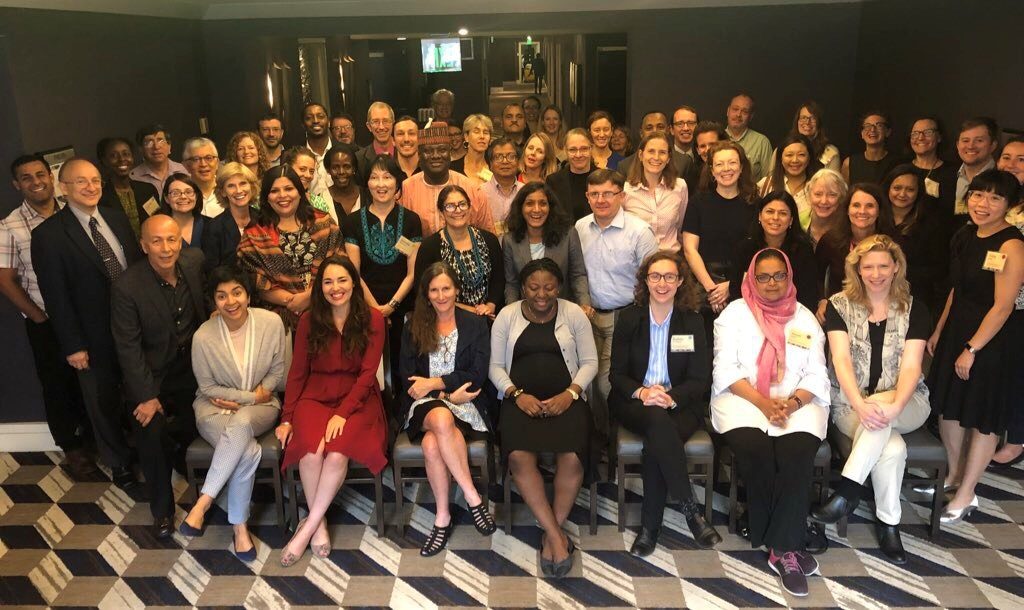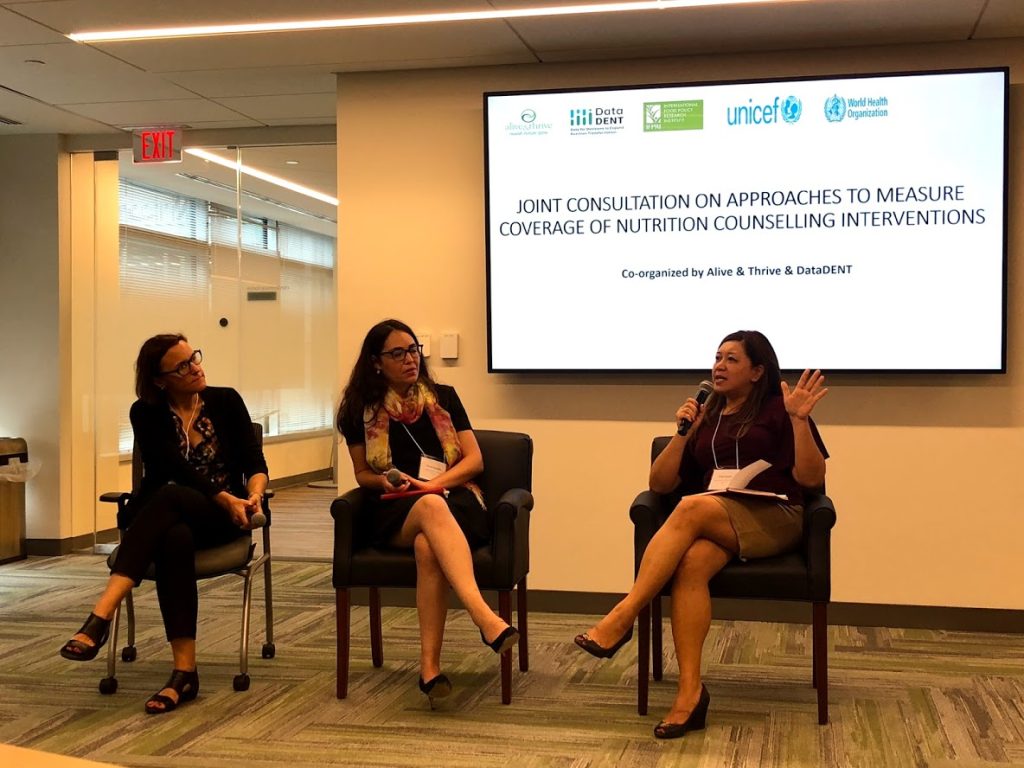
Last month, DataDENT collaborated with partners for two events to discuss how we can improve coverage measurement of nutrition counseling interventions and fill nutrition data gaps in population-based household and facility surveys. The Joint Consultation on Approaches to Measure Coverage of Nutrition Counselling Interventions (September 17, 2018) and Technical Consultation on Measuring Nutrition in Population-Based Household Surveys and Associated Facility Assessments (September 19-20, 2018)—held back-to-back in Washington, D.C.—brought together nutrition measurement experts from governments, nutrition non-profit organizations, universities, development partners, and survey programs.
Co-convened by Alive & Thrive, DataDENT, and the World Health Organization (WHO)-United Nations Children’s Fund (UNICEF) Technical Expert Advisory Group for Nutrition Monitoring (TEAM), and hosted by International Food Policy Research Institute (IFPRI), the Joint Consultation on Approaches to Measure Coverage of Nutrition Counselling Interventions aimed to consolidate insights from research, evaluations and implementation efforts and facilitate dialogue towards the development of indicators to measure coverage of infant and young child feeding (IYCF) counseling and behavior change interventions.

WHO and UNICEF developed IYCF global guidelines in 2002, which describe recommendations for optimal breastfeeding and complementary feeding to improve child survival. WHO published a set of eight core and seven optional IYCF indicators in 2008. These indicators are used widely and have helped countries assess progress and improved harmonization of IYCF data. In the past year, there have been increasing efforts to reflect on how IYCF indicators are operationalized and whether modifications are needed to improve current indicators of IYCF practice, eliminate biases, and address new issues. During the consultation, participants learned about current efforts to measure IYCF counselling coverage in program evaluations and large-scale surveys. Discussion followed on core and expanded survey questions that could best capture IYCF counselling. The consultation identified three priorities for measurement: breastfeeding counseling during antenatal care, breastfeeding counselling in the first month, and IYCF (either breastfeeding or complementary feeding) counselling in the first two years.
Deliberations from the Joint Consultation on Approaches to Measure Coverage of Nutrition Counselling Interventions directly fed into the Technical Consultation on Measuring Nutrition in Population-Based Household Surveys and Associated Facility Assessments. Bill & Melinda Gates Foundation, United States Agency for International Development (USAID), UNICEF, and WHO co-hosted the event. The event had three objectives:
- To review how nutrition data, including indicators and data sources, are currently being used by different stakeholders at global and country levels and identify the gaps that remain in their information needs that could be filled through household or facility surveys.
- To review recommendations from recent technical consultations for improving collection of anthropometric and micronutrient status data in large-scale household surveys.
- To identify ways to augment, improve and/or harmonize questions about nutrition intervention coverage, IYCF and other diet-related practices using the core questionnaires of the major household and facility surveys as a starting point.

The event featured a mix of plenary presentations on how nutrition data is collection by household and facility surveys and country data needs. Working group sessions of technical experts specializing in growth, IYCF/Diet, micronutrients, maternal, infant and young child (MIYCN) counselling interventions reviewed existing related nutrition survey questions and identified potential question modifications to improve nutrition measurement. The full meeting report, presentations, and working group notes are available here.
Both consultations resulted in concrete ideas for DataDENT technical advocacy priorities and targeted research. In addition, the events are timely given expected revisions to global guidance for breastfeeding programs for WHO and DHS-8 Questionnaire Review period. During the next few months, we look forward to translating event outputs into actionable steps and coordinate related advocacy activities to improve nutrition measurement.
